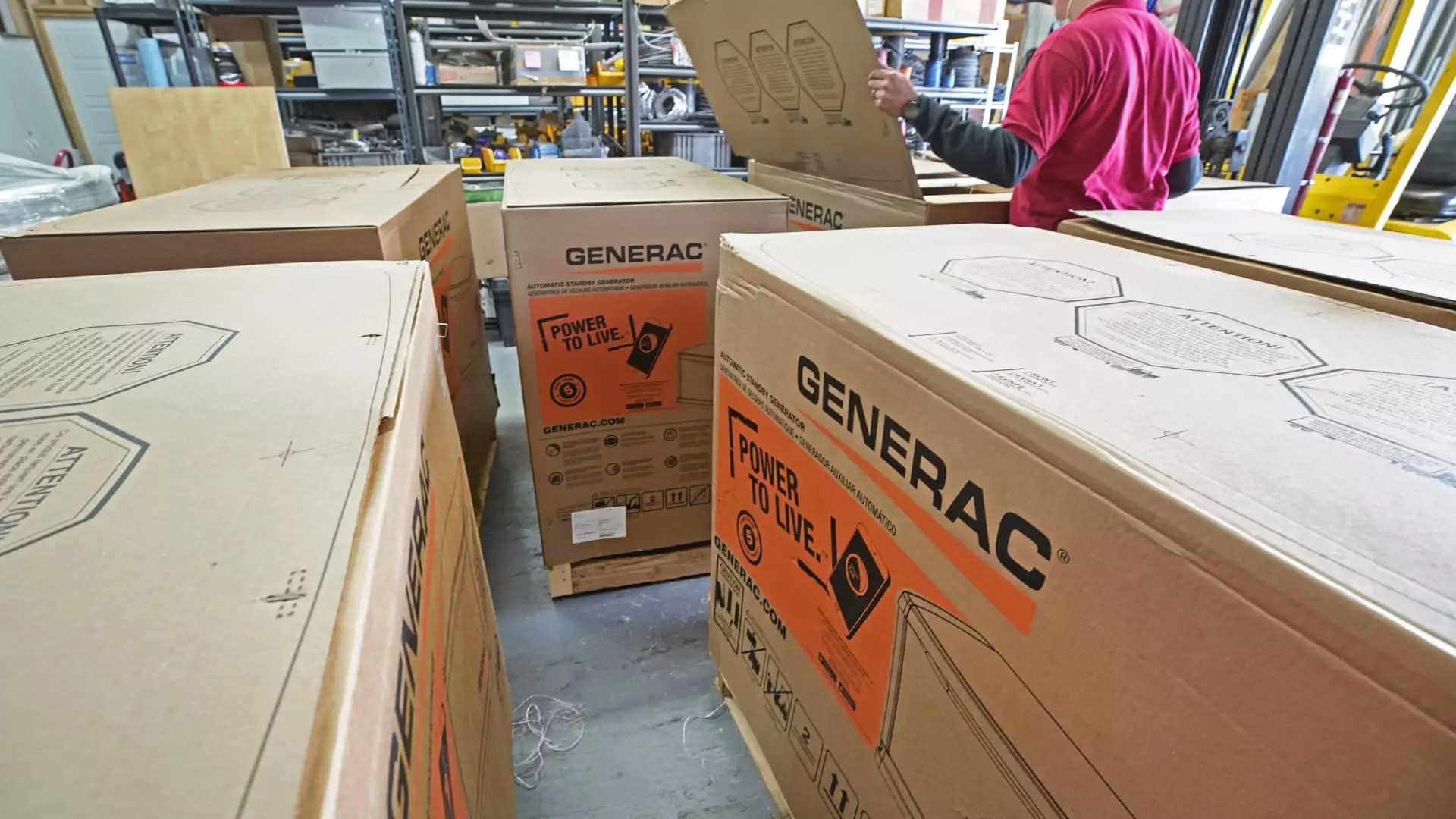As summer unfolds, it brings not only warmth but critical challenges that have financial repercussions for investors, businesses, and the power infrastructure in the United States. The surge in temperatures across the nation has led many to flock to shares of Generac, the prominent backup generator manufacturer. The company’s impressive 12% growth this week underscores a growing awareness of vulnerabilities faced during extreme weather conditions. However, the excitement over financial gains stands in stark contrast to the somber implications of climate change on our power infrastructure and societal fabric.
With around 130 million individuals currently shrouded in extreme heat warnings, the harsh reality is that these temperatures lead to increased energy consumption and, consequently, mounting pressure on the aging power grid. It’s critical to understand that while some investors celebrate the stock surge, the underlying causes are alarming, as the very fabric of our energy systems is under siege from unprecedented climatic conditions.
The Tempest on the Horizon
Beyond the sweltering heat, this year’s Atlantic hurricane season threatens to unleash a formidable array of storms. Predictions by the National Oceanic and Atmospheric Administration indicate a spike in named storms, including potential major hurricanes. This season, which is expected to be above average, is not merely a meteorological concern but a signal of a deeper crisis—a crisis stemming from our climate policies that have failed to adapt to the rapidly changing landscape.
The recent emergence of Tropical Storm Andrea, although it fizzled into a rainstorm, serves as a stark reminder of our unpredictable vulnerability. The fact that our infrastructure is expected to face a staggering 50% increase in power outages caused by hurricanes, as research suggests, is not a warning but a wake-up call for immediate action. The focus should not solely be on reactive investments in companies like Generac or Trane Technologies but on proactively strengthening our energy infrastructure.
Companies Standing on Shaky Ground
While Bank of America forecasts impressive growth in electrical load over the next decade, this projection prompts a more profound concern: Will our existing utility companies, already beleaguered by climate change impacts, be able to shoulder this increasing demand? Investors are generating wealth while systemic issues fester beneath the surface. The preference for “laggards” with the potential for better performance, as suggested by financial analysts, should alarm us all.
Put simply, the utilities sector’s triumph over the S&P 500 is misleading. While stocks from companies like Constellation Energy and Vistra might appear to shine, they are, in fact, profiting off the exploitation of an overstressed system. This is not a sustainable model; the relentless push for profit blinds decision-makers to the ecological and social costs that will eventually cripple the very enterprises they are investing in.
What Lies Ahead for Our Energy Strategy
As we forge ahead, we must completely reevaluate our national energy strategy. The belief that new technology, such as data centers and cooling systems, can solve our problems is dangerously naive. In his discussions, Generac’s CEO, Aaron Jagdfeld, aptly states that the discussion about the straining power grid is crucial. “This is only going to get worse,” he warns, noting that too many are focused on short-term financial gains instead of long-term solutions.
In addition to bolstering the physical infrastructure, we need commitment from governmental bodies to invest in sustainable resources that reduce our dependence on fossil fuels. Without these strategic changes in policy, domestic energy security will continue to erode, exacerbated by successive heatwaves and storms.
Cultivating Awareness and Action
The recent market activity regarding companies like Generac reflects a pressing need for public policy change aimed at environmental sustainability. Climate changes will not abide by the whims of market dynamics; therefore, a shift toward renewable energy investments will not only fortify our power sector but could also herald a new era where economic stability coexists with environmental responsibility.
Engaging with innovative energy solutions and fostering a culture of sustainability within investment strategies can and must be done. Hiding behind rising stock prices will not shield us from the impending climate crises that threaten our communities, our economy, and the very core of American society. The time for strategic action is now, lest we face the repercussions of our inaction.


Leave a Reply